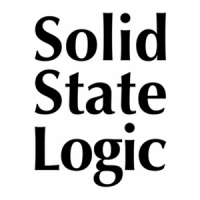
Do you have a question about the Solid State Logic SL 9000 J SERIES and is the answer not in the manual?
| Type | Analog |
|---|---|
| Manufacturer | Solid State Logic |
| Channels | 24, 32, 40 |
| Faders | 100mm |
| EQ | 4-band |
| Dynamics | Compressor |
| Master Section | Includes monitoring |
| Total Harmonic Distortion + Noise | <0.1% |
| Inputs | Mic/Line per channel |
| Outputs | Aux Outputs |
| Console Type | Inline |
| Dimensions | Varies |
Provides an overview of the SL 9000 J console, its features, and its lineage from previous SSL models.
Explains the RECORD, REPLAY, and MIX statuses and their effect on fader paths.
Details the standard VU metering or SSL's back lit LCD bargraphs and their calibration.
Describes the SL911 Input/Output module, its enhancements over the SL4000G, and its various sections.
Highlights the six key elements in the SL911J I/O module that define audio paths and connections.
Details the channel input stage, including MIC, LINE, and SUBGROUP inputs, and related controls.
Explains the Large Fader's link to automation and its associated pan control.
Describes the signal path connections in RECORD status mode for basic track recording.
Details the channel input stage, including MIC, LINE, and SUBGROUP inputs, and related controls.
Explains the compressor/limiter and expander/gate sections and their routing buttons.
Covers the four-band parametric EQ and High/Low pass filters and their routing options.
Describes the stereo and mono auxiliary sends, their controls, and the EFX reassign system.
Details the Master Facilities Module, housing master logic and monitoring controls.
Explains the four desk status configurations and their effect on signal routing.
Covers monitor selection, controls, and different monitoring modes like 2 CH, 4 CH, and MONO.
Describes the console's main output controls, including the Master Fader and Offset control.
Explains the SL 9000 J Series patchbay, its rows, and the types of normalling used.
Describes the function of the half-normalled connection in the patchbay.
Explains the fully normalled wiring of the patchbay's top and bottom rows.
Details the post main level control outputs and inserts for Stereo Subgroup busses.
Introduces the J Series Computer, its automation system, and session management.
Explains how session data is stored in Project Files on the System Disk.
Covers fundamental operational techniques for the J Series Computer.
Details how to enter names for Projects, Mixes, and Cues using the QWERTY pop-up.
Describes the standard Default Project and its initial setup information.
Guides on creating a new Project File, copying from the Default Project.
Explains how to base a new project on a copy of an existing one.
Details how to load elements of a Project File from the Project Manager pop-up.
Provides an overview of the J Series machine control flexibility and setup.
Explains the relationship between system sync and tape machine timecodes.
Details the Serial Machine Control display and its interface for controlling machines.
Guides on connecting and bringing a machine on-line using the system.
Explains the creation and use of cue lists, forming part of the Events List.
Provides steps to create a cue list using the MARK and NAME MARK buttons.
Details how to renumber, rename, delete, and move cues in the Events List.
Describes the creation and storage of Track and Channel Lists on a per-project basis.
Introduces the SL 9000 J mix automation system and its features.
Explains methods to move the Desk and external machines to specific timecode points.
Details the five one-shot locate stores and how to set up relative locates.
Explains how to assign large channel faders to Group Control faders.
Describes how Total Recall records and resets console control positions.
Explains how to save Total Recall setups on a per-project basis.
Details how to recall previously saved Total Recall setups.
Provides options to speed up the reset process, including Autoscan.
Provides access to system facilities like Network, Serial, and PatchBay.
Details the Network page for setting up control relationships between SSL devices.
Indicates device relationships (Master, Slave) affecting transport control.
Explains how to save and restore current Network page parameters.
Introduces macros as user-programmable commands for automating tasks.
Guides on creating macros and determining user-definable button functions.
Lists functions that can be incorporated into macros with definitions.
Explains how to name macros during creation via the QWERTY pop-up.
Covers setup options, tools, and diagnostics not previously described.
Details file transfer to/from the J Series Computer via terminal or printer.
Covers items like Fast Play Speed, DiskTrack Free, Timecode, and Channel Names.
Contains console configuration and calibration facilities.

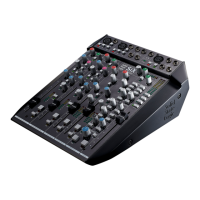
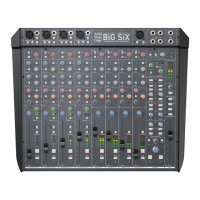
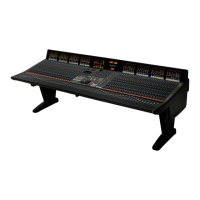

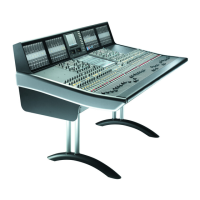




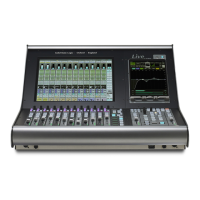
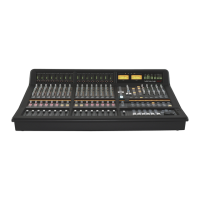
